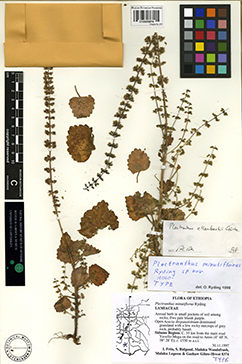21,500 types of flowering plants have been registered and scanned and are available on the internet
The project to make types of vascular plants at the Natural History Museum of Denmark internationally available on the internet is now concluded. Now, after seven years with support from the Andrew W. Mellon Foundation, the approximately 21,500 types of flowering plants at the Natural History Museum of Denmark have been registered and scanned and are all being made available on the internet.
The first plans for an international project to scan types of African plants and make the scans and data available on the internet were discussed in 2007 at an international congress in Yaounde, Cameroon. The Andrew W. Mellon Foundation in New York generously undertook to support this undertaking. The aim was to promote international taxonomic cooperation between herbaria and natural history museums in developed countries, and to involve institutions in Africa so that their type of material was also easily accessible.
Professor Ib Friis at the Natural History Museum of Denmark was curator of the herbarium of flowering plants with African material. He applied for a grant from Mellon Foundation, and it was granted.
Since the project was extended to include types from Latin America, again with support from the Andrew W. Mellon Foundation, and even later the project was extended to deal with all types of flowering plants.
International database
Now almost 21,500 types of vascular plants at the Natural History Museum of Denmark have been scanned and recorded, and files sent to the United States. There images and information are incorporated into an international database called ‘Global Plants,’ which now contains more than two million images of botanical types from more than 300 herbaria and museums worldwide.
The base maintained by the organization JSTOR, also known as a portal for many digitized journals.
Global Plants can be found here.
The international cooperation behind the ‘Global Plants’ is uniquely wide. At the Natural History Museum of Denmark the Andrew W. Mellon Foundation has covered salaries for seven years in order to make the valuable collection of sometimes very old type specimens internationally available. There is good reason to be grateful to the Andrew W. Mellon Foundation for the generous support to this project.
Related News
Contact
Ib Friis
Professor emeritus at Biosystematics
Natural History Museum of Denmark
University of Copenhagen
Mail: ibf@snm.ku.dk
Phone: +45 35 32 21 97

